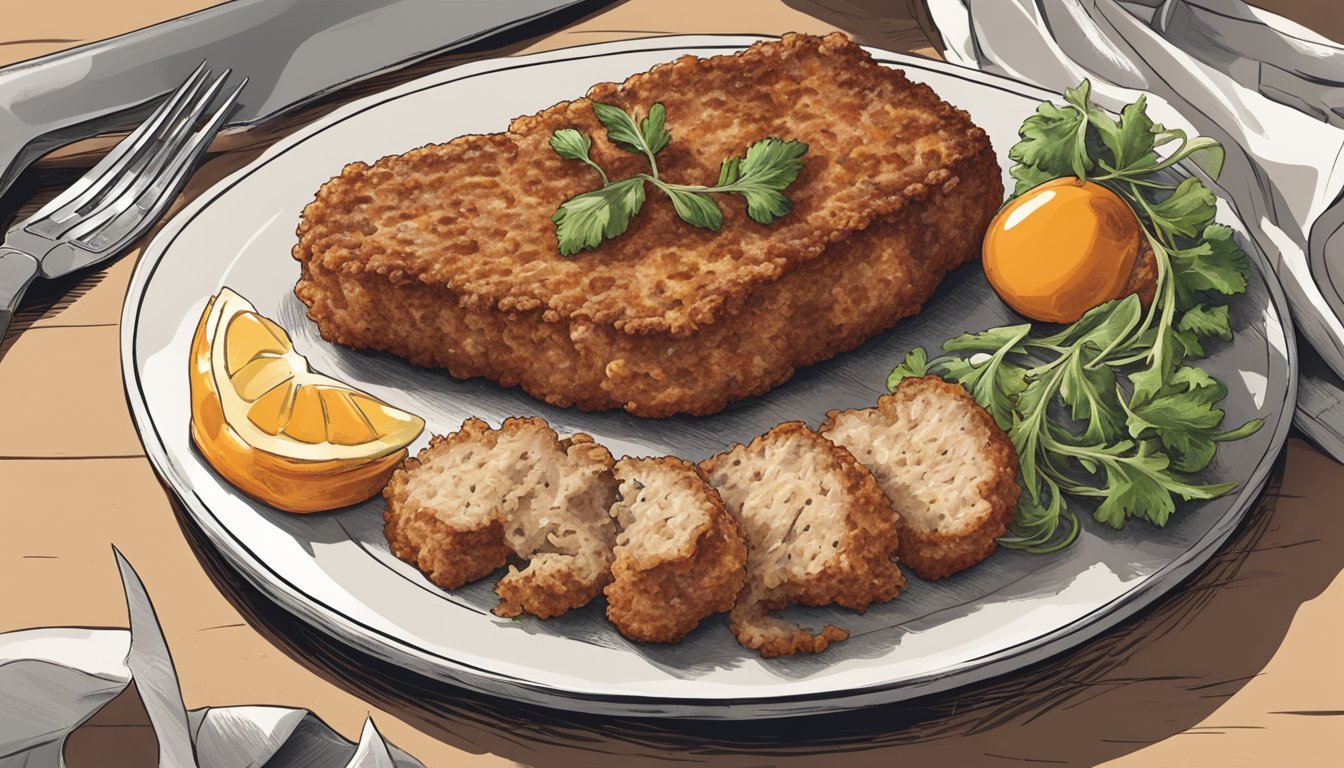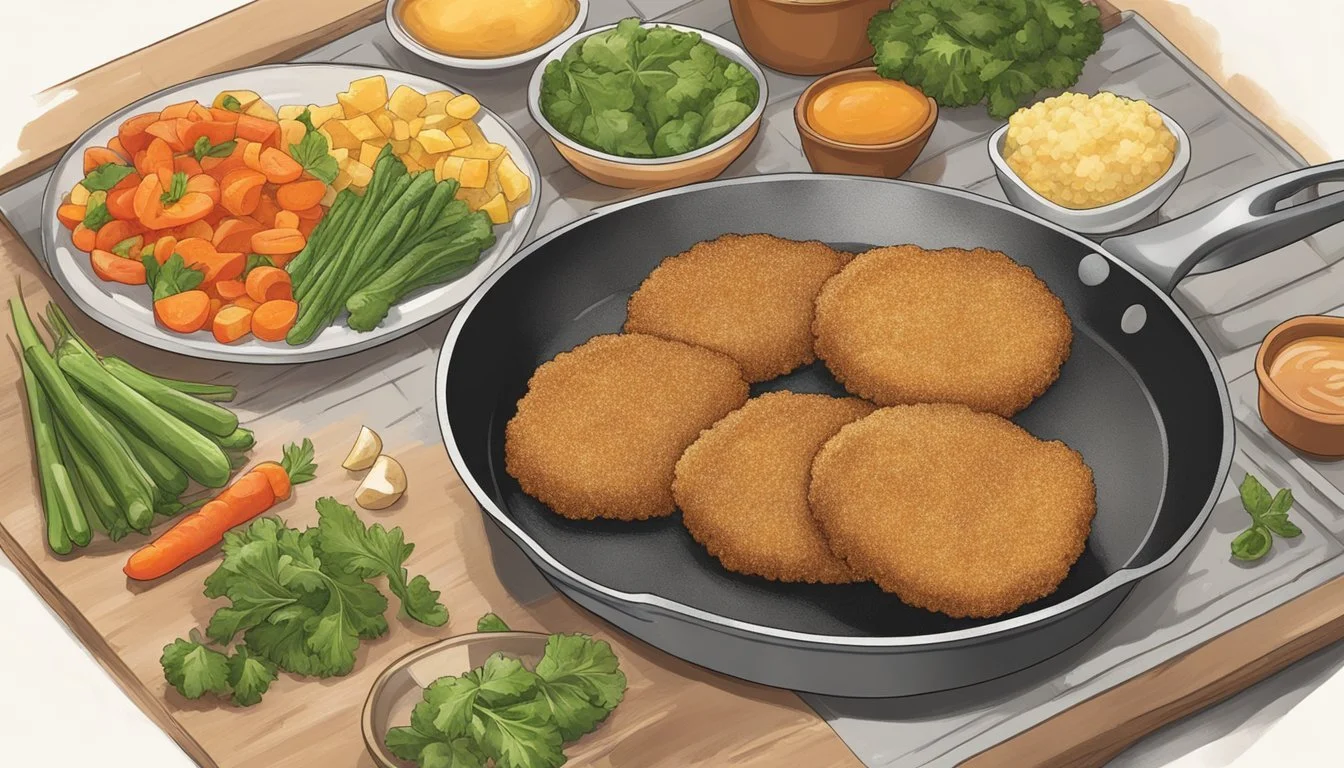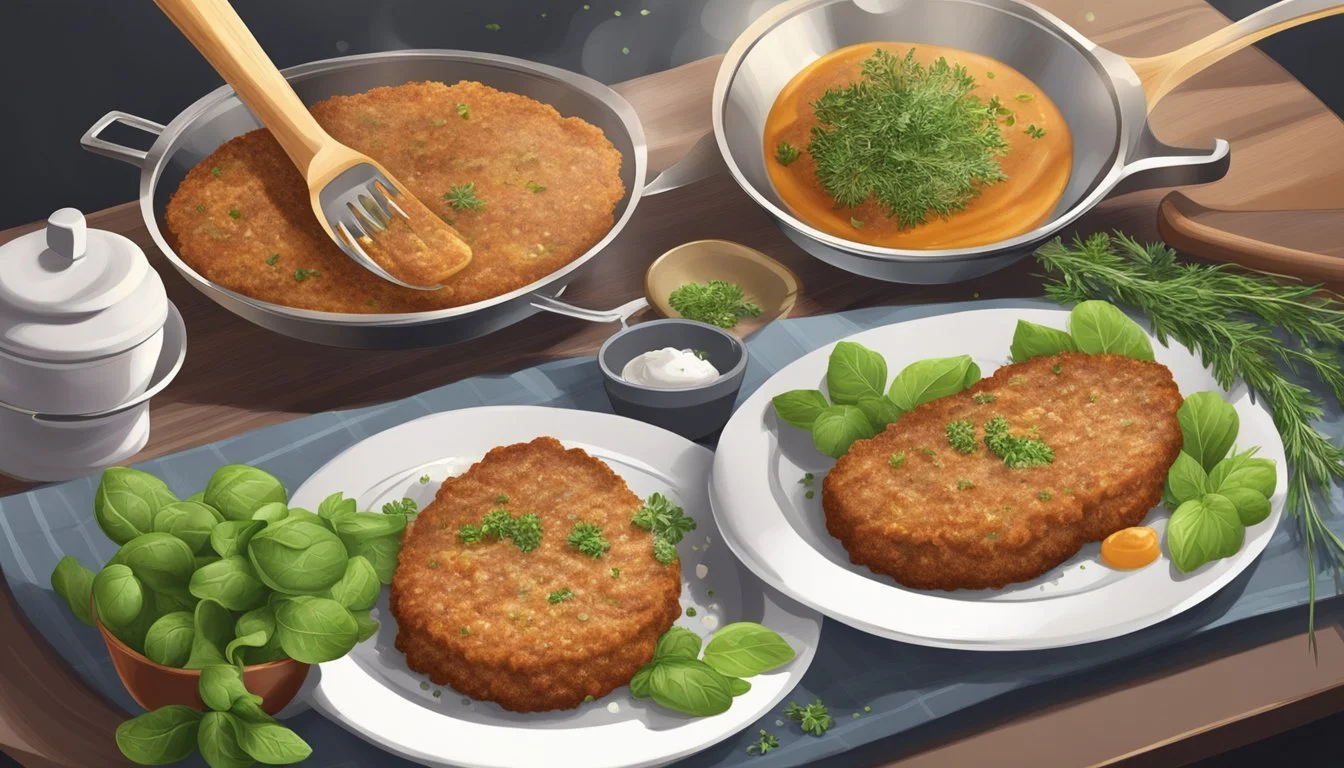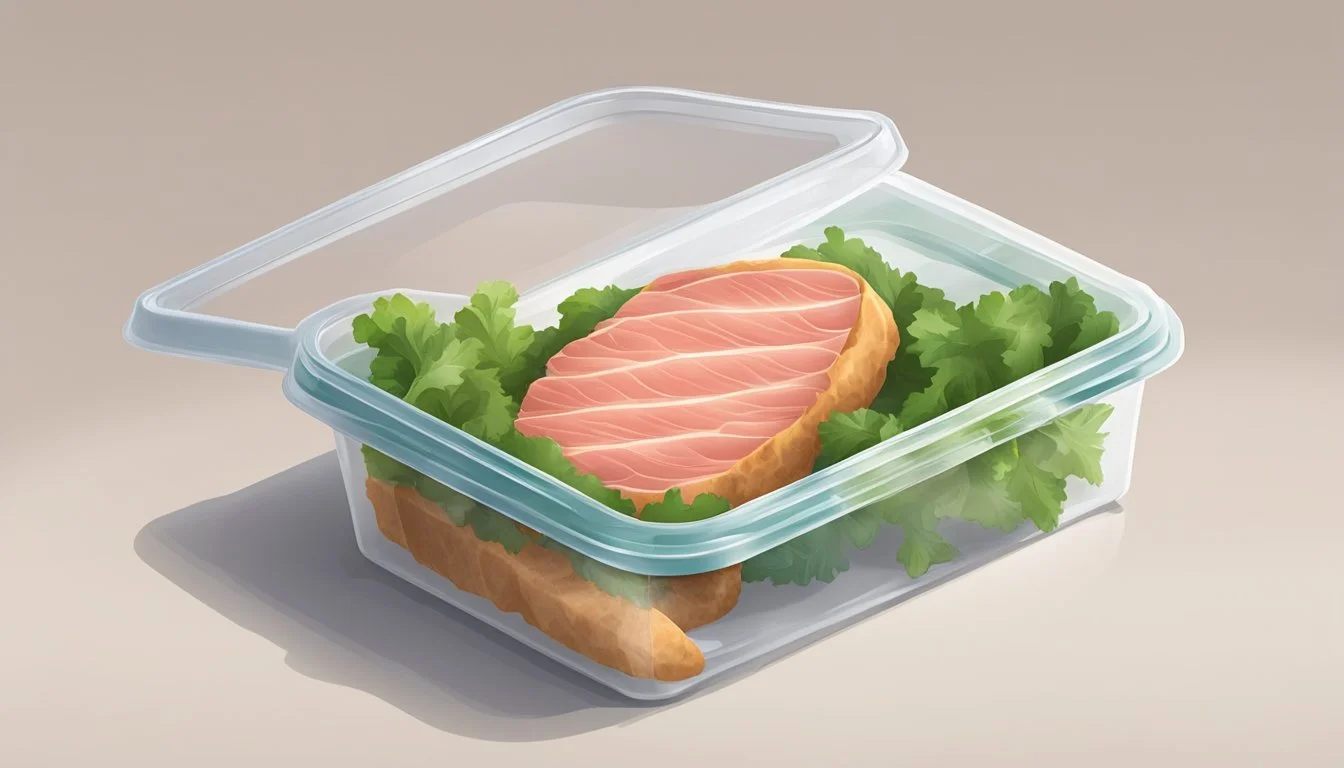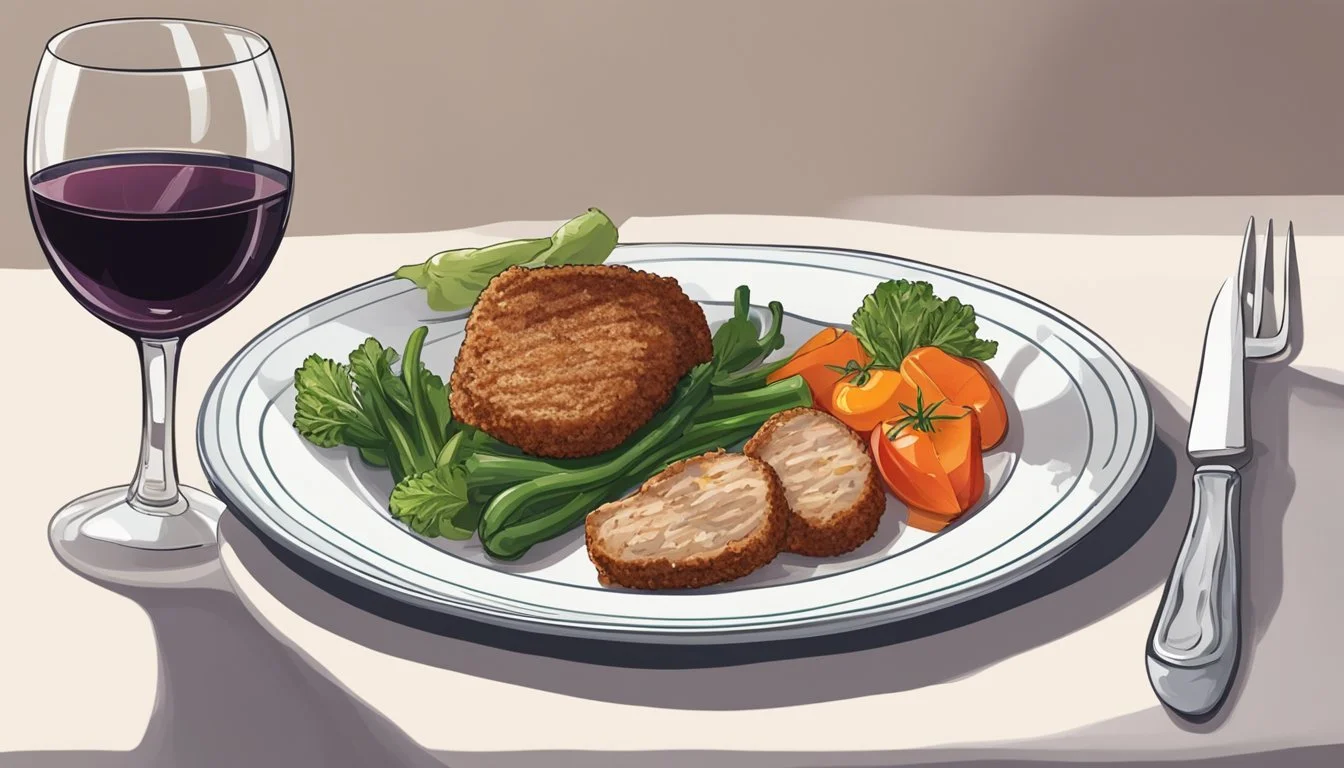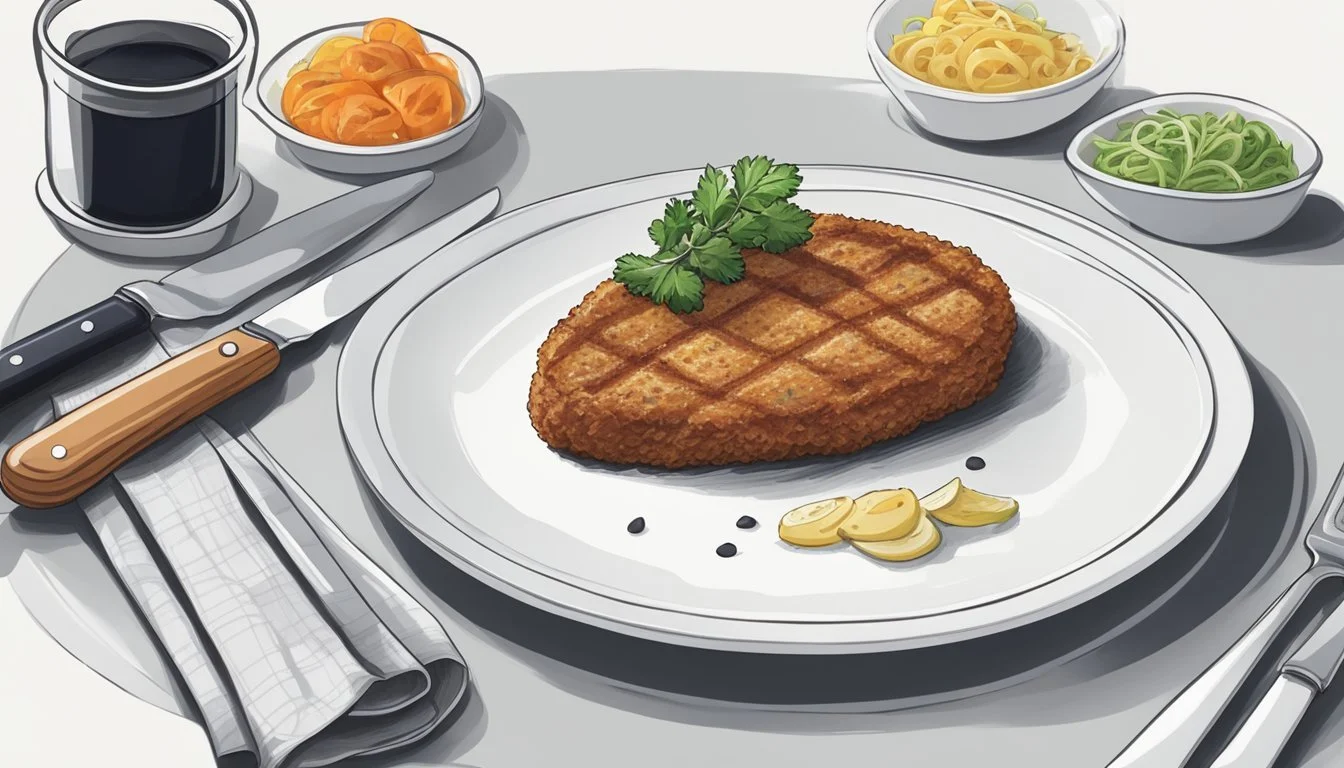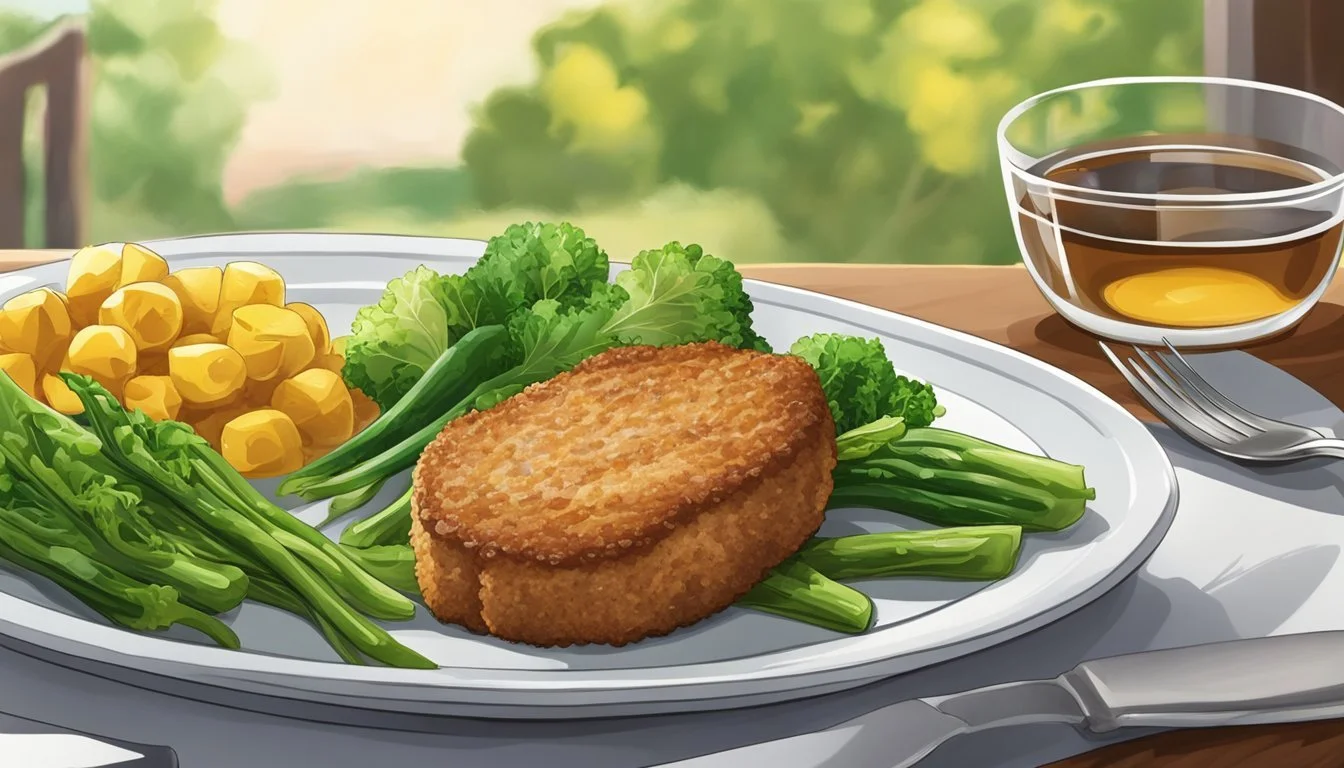How Do You Eat a Veal Cutlet?
Mastering the Art of Fine Dining
Veal cutlets (What wine goes well with veal cutlets?) are a cherished component in various cuisines, offering a delicate texture and subtle flavor that appeal to many palates. When it comes to eating veal cutlets, the approach is similar to consuming other breaded meat cutlets; it’s often about the balance of a well-seasoned, crispy exterior with a tender, juicy interior. Properly prepared and cooked, veal cutlets can be a sumptuous addition to any meal, embodying both sophistication and rustic charm that is hard not to savor.
The cooking process for veal cutlets typically involves breading and a swift fry to achieve that sought-after golden crust. They are seasoned accurately, passed through flour, dipped in egg wash, and then coated with breadcrumbs. This sequence is essential to ensure that each cutlet is perfectly breaded, creating a barrier that locks in moisture and flavor. Chefs and home cooks alike take care to maintain a medium-high heat for frying the cutlets, ensuring each side receives an adequate amount of time—usually 2-3 minutes—to achieve a golden-brown finish without overcooking the delicate meat.
When serving veal cutlets, simplicity often reigns supreme, allowing the natural flavors of the veal to shine through. They are typically accompanied by light, complementary sides such as a crisp salad, a fresh serving of steamed vegetables, or a tangy lemon wedge to enhance the veal’s mild taste. Whether one is enjoying veal Milanese, a classic Italian preparation, or experimenting with various seasonings and side dishes, veal cutlets offer a versatile canvas for culinary creativity. With careful preparation and proper technique, they can be transformed into a truly delicious and memorable dining experience.
Understanding Veal
When approaching veal cutlets, it's essential to grasp the basics of veal itself, from its definition and varieties to its nutritional aspects and selection criteria. This understanding sets the stage for appreciating the tender meat and flavor that veal offers.
Veal: Definition and Varieties
Veal refers to the meat from young calves, typically ranging from a few weeks to 3 months old. As a softer and more delicate meat compared to older cattle, veal is known for its tender texture and lighter flavor. The varieties of veal are largely based on the age of the calf and the diet it has been fed, with the main types including:
Milk-fed (white veal): Obtained from calves that are fed mostly milk; it has a pale pink color and is considered the most tender.
Grain-fed (red veal): Comes from calves that have been fed grains in addition to milk, leading to a darker, more pronounced flavor.
Nutritional Profile of Veal
Veal is notable for its high protein content and relatively low calories, making it a popular choice for those looking for lean meats. A 3-ounce serving typically contains:
Protein: About 22 grams
Calories: Approximately 194
Fat: Roughly 7 grams
Given its nutritional makeup, veal can be a valuable part of a balanced diet, offering sufficient protein while being lower in fat compared to some other red meats.
Selecting Quality Veal Cutlets
To ensure one enjoys the tender meat and subtlety of veal's flavor, selecting quality veal cutlets is crucial. Look for cutlets that are:
Pinkish in color: Indicative of fresh, milk-fed veal.
Firm and fine-grained: The meat should spring back when pressed.
Free of excessive moisture: This indicates good handling and storage.
Additionally, one might consider choosing veal chops, which are bone-in cuts from the loin or rib that contain more connective tissue, enhancing the flavor when cooked properly. Remember, the presence of the bone can influence the cooking time and technique used.
Preparation Basics
The essence of preparing a veal cutlet dish revolves around gathering the appropriate ingredients, having the right kitchen tools at hand, and following a straightforward preparation process. Mastery of these basics sets the foundation for an impeccable veal cutlet meal.
Ingredients List
Veal cutlets: 4 pieces (approximately 6 ounces each)
Salt: 1 teaspoon (to taste)
Black pepper: 1 teaspoon (to taste)
Flour: 1 cup (for dredging)
Eggs: 2 (beaten)
Bread crumbs: 1 cup (preferably seasoned)
Butter: 2 tablespoons
Olive oil: 2 tablespoons
Lemon juice: 2 tablespoons (optional)
Parsley: Chopped (for garnish)
Required Kitchen Tools
Frying pan or skillet: Preferably non-stick for even cooking
Baking sheet: Lined with parchment paper if opting to finish in the oven
Saute pan: If preferred over a frying pan
Meat tenderizer: For flattening the cutlets
Bowls: For holding flour, beaten eggs, and breadcrumbs
Tongs or spatula: For flipping the cutlets
Paper towels: For draining excess oil
Veal Cutlet Prep
Begin by laying out the veal cutlets and patting them dry with paper towels. Using a meat tenderizer, lightly pound the cutlets to an even thickness, which promotes uniform cooking and tenderness. Season both sides of the cutlets with salt and pepper to taste. Next, prepare a breading station with three bowls containing flour, beaten eggs, and breadcrumbs, respectively. Prep time is approximately 15 minutes. Dredge each cutlet in flour, dip into beaten egg, and coat with breadcrumbs. In a frying pan or skillet, heat butter and olive oil over medium-high heat before cooking the breaded cutlets to a golden brown, which usually takes about 2-3 minutes per side. If desired, a final squeeze of lemon juice can be used to enhance the flavor.
Cooking Techniques
When cooking veal cutlets, the method used can greatly affect the texture and flavor outcome. Whether breading for a crispy coat, frying for a golden-brown finish, baking for a healthier option, or exploring other methods, each technique requires specific steps to ensure a delectable meal.
How to Bread Veal Cutlets
Breading veal cutlets involves a three-step process to achieve a crunchy exterior with a tender interior. First, dredge the cutlet in all-purpose flour. Next, dip it into an egg mixture, typically beaten eggs potentially thinned with a little milk. Lastly, coat it in bread crumbs—panko for extra crunch or fine bread crumbs for a traditional texture.
Frying Versus Baking
Frying veal cutlets in oil over high heat creates a deeply golden brown, crispy crust. Use oils with a high smoke point, such as olive oil, vegetable oil, or canola oil. Alternatively, baking veal cutlets on a baking sheet in a 400°F (200°C) oven caters to those monitoring calories, yet still results in a satisfactory golden brown finish without the need for frying.
Cooking to Perfection
Achieving the ideal doneness for veal cutlets is critical. When frying, cook for approximately 2-3 minutes each side or until golden brown. In the oven, veal cutlets may take 15-20 minutes. Regardless of method, the internal temperature should reach 160°F (71°C). It's important to rest the meat on a serving platter for a few minutes before serving to retain juices.
Additional Cooking Methods
Beyond frying and baking, veal cutlets can be prepared using a grill or skillet. Grilling imparts a distinct char and flavor, accentuated with rosemary and other spices. For those who enjoy a richer flavor, pan-searing veal chops, particularly those that are bone-in, in butter presents another delectable option.
Flavor Enhancements
Perfecting the flavor profile of veal cutlets involves a harmony of seasoning, spices, and the right accompaniments. The gentle taste of veal allows spices and sauces to stand out, making each bite both nuanced and satisfying.
Seasoning and Spices
When seasoning veal cutlets, achieving a balance that complements the meat's subtle flavor is crucial. Start with a base of fine sea salt and freshly ground black pepper. Incorporating aromatic herbs like rosemary and sage adds depth. For a touch of warmth, garlic powder can be evenly sprinkled over the cutlets.
Veal Milanese, hailing from Milan, typically involves a coating of breadcrumbs seasoned with Parmigiano, herbs, and a squeeze of lemon juice. This crust adds a flavorful crunch, responding well to a final hint of olive oil drizzled over the golden-brown exterior as it emerges hot from the pan or air fryer.
Sauces and Accompaniments
The selection of sauces and sides should complement the delicate nature of veal without overpowering it. A simple arugula salad dressed with olive oil, lemon juice, and a pinch of salt offers a fresh contrast. For a richer experience, a butter-based pan sauce with a splash of wine and fresh parsley can elevate the dish.
Additionally, veal cutlets can be layered with a bright marinara sauce and Parmigiano, transforming the cutlet into a comforting meal. For a tangy edge, serving the cutlets with lemon wedges encourages guests to add a zest that cuts through the richness. Pair with a side of spaghetti or green salad for a complete meal experience.
Serving and Presentation
When serving veal cutlets, presentation plays a vital role. An appealing arrangement enhances the dining experience. The dish's visual appeal should match its flavor, with careful consideration to the plating and accompaniments.
Plating Suggestions
Veal cutlets, particularly Veal Milanese, are typically presented in a way that showcases their golden-brown crust. They are often laid out on a serving platter with garnishes of arugula salad, tomatoes, and lemon wedges to add freshness and color. A lightly dressed arugula salad atop the cutlet introduces a peppery contrast to the dish’s richness. Adding parmigiano shavings over the salad brings a salty and nutty flavor, rounding out the dish.
Pairings and Side Dishes
Complement veal cutlets with sides that counterbalance their texture and flavor. For a classic pairing, serve with a green salad or a simple arugula salad dressed with olive oil and lemon juice. This adds a crisp, clean element to the plate. Mashed potatoes or a light pasta dish can serve as hearty complements, providing a smooth contrast to the cutlets' crunch. To suit the diner’s preference, include a small dish of fresh lemon wedges for the option of added zest.
Safety and Storage
When handling and storing veal cutlets, it is crucial for safety and quality to adhere to proper techniques. This includes mindful handling of the raw meat, and understanding the appropriate methods for refrigeration and reheating to minimize the risk of foodborne illnesses.
Handling Raw Veal
Before Cooking:
Always wash hands thoroughly with soap and water before and after handling raw veal.
Use separate cutting boards and utensils for raw veal to prevent cross-contamination with other foods.
During Preparation:
If marinating veal cutlets, do so in the refrigerator to keep the meat at a safe temperature.
Never leave veal cutlets at room temperature for more than 2 hours, or 1 hour if the ambient temperature is above 90°F.
Storing and Reheating
Refrigeration:
Store uncooked veal cutlets in the refrigerator at 40°F or below, and use them within 1-2 days of purchase.
For longer storage, veal cutlets can be wrapped in airtight packaging and frozen at 0°F, where they will maintain quality for up to 6 months.
Freezer:
Wrap veal cutlets in heavy-duty aluminum foil, freezer paper, or plastic freezer bags to protect from freezer burn.
Reheating:
Thaw frozen veal cutlets in the refrigerator or use a microwave for a quick defrost.
Reheat veal cutlets to an internal temperature of 165°F, ensuring they are heated evenly.
Veal cutlets can be reheated in the oven or on the stove, but avoid using a microwave as it may lead to uneven cooking and a decrease in quality.
Cultural and Historical Context
Veal cutlets have a rich global history and have evolved significantly over time, transforming themselves into hallmark dishes that reflect local traditions and flavors.
Veal Cutlets in World Cuisine
In world cuisine, veal cutlets are celebrated across various cultures under different names and preparations. They are integral to Italian cuisine, particularly in Milan and Sicily, where veal cutlets are known as Veal Milanese and Vitello respectively. These breaded veal cutlets are considered a staple, often served with a side of crisp salad or potatoes. The Austrian counterpart, Wiener Schnitzel, is another iconic dish that is legally protected in its preparation and presentation in Austria, showcasing a thin, breaded, and fried veal cutlet complete with a wedge of lemon.
Milan, Italy: Veal Milanese, or Cotoletta alla Milanese, is a symbol of Milanese culinary heritage. It is traditionally made with a bone-in veal cutlet, breaded and pan-fried.
Sicily, Italy: In Sicily, veal cutlets take the form of Scallopini, which are thinly sliced and often accompanied by rich sauces and pasta.
Evolution of Veal Dishes
Veal dishes reflect a deep connection with dairy farming, a linkage that dates back more than a century when veal farming extended from Europe to the United States. The use of male dairy calves for veal meat has contributed to a diversity of dishes. Over time, breaded veal cutlets have evolved into beloved regional specialities. Veal Milanese, for example, has undergone its unique transformation, adhering to traditional preparation methods that have been passed down through generations ensuring consistency and quality. The evolution of these dishes speaks to the creativity and versatility of cooks and chefs in adapting veal to local tastes and available ingredients, cementing veal cutlets as true classics in international cuisine.
Health and Ethical Considerations
When considering veal cutlets as a dietary choice, one must weigh the nutritional benefits against the ethical implications. This section provides insight into the health aspects of consuming veal and the moral considerations involved in its production.
Health Implications of Eating Veal
Veal, derived from young calves, is a protein-rich meat that supplies various essential nutrients. A typical 4-ounce serving of veal is not only substantial in protein content but also provides necessary vitamins and minerals. For instance, this serving size contains around 51% of the Recommended Dietary Allowance (RDA) for niacin, 11% for potassium, and 38% for phosphorus. These nutrients are vital for energy production, maintaining electrolyte balance, and supporting bone health, respectively.
Nutritional Profile of a 4-ounce Veal Cutlet:
Calories: Varied depending on cooking method and cut
Protein: High
Essential Nutrients:
Niacin: Approximately 51% of RDA
Potassium: About 11% of RDA
Phosphorus: Around 38% of RDA
The moderate calorie count of veal makes it an appealing option for those managing their energy intake. However, consumption should be mindful of the preparation method, as added ingredients can significantly alter the nutritional value.
Ethical Aspects of Veal Production
Ethical concerns surrounding veal production largely stem from the welfare of the calves. Traditionally, some veal farming practices have been scrutinized, giving rise to notable stigma. In response, improvements in animal welfare practices have been implemented. For instance, it is illegal in the United States to use growth hormones on calves, and antibiotics are administered only if an animal is ill—addressing some concerns regarding animal treatment and food safety.
However, there remains a divergent standpoint regarding the ethics of consuming veal. Advocates assert that improved practices have lessened the ethical dilemma, while critics question the morality of consuming meat from young animals. Moreover, veal production is often contrasted with that of beef, with claims suggesting that veal may be a more environmentally friendly option due to lower water and grain needs. Nevertheless, these practices can vary by farm and region, and ethical considerations remain a personal and often cultural decision.
Frequently Asked Questions
This section covers common inquiries and practical advice for preparing veal cutlets, focusing on enhancing their flavor and achieving the perfect texture.
Common Queries About Veal Cutlets
What are veal cutlets? Veal cutlets are thinly sliced portions of veal that are often breaded. They're considered a versatile main dish and a staple in various cuisines, offering a tender texture and mild flavor.
How to choose the best veal cutlets for frying? Select veal cutlets that are evenly thin to ensure they cook quickly and evenly to a golden brown without drying out. This is essential for a juicy and flavorful weeknight dinner or comfort food experience.
Cooking Tips and Tricks
How should veal cutlets be prepared for cooking? For the best results:
Dredge the thinly sliced veal cutlets in flour seasoned with salt and pepper.
Dip them into an egg wash to ensure the breadcrumbs adhere properly.
Coat with breadcrumbs for a crispy crust once cooked.
What is an effective method to fry veal cutlets? To achieve a perfect golden brown crust:
Heat butter or oil in a frying pan over medium to high heat.
Cook veal cutlets for approximately 1.5-2 minutes per side.
Once cooked to a golden brown, remove the excess oil by placing the cutlets on a wire rack or paper towel.
By adhering to these straightforward guidelines, one can ensure their veal cutlets are perfectly cooked, preserving their innate tenderness and pairing well with various side dishes for an appealing meal.
Conclusion
Veal cutlets, as a main dish, cater to a variety of taste preferences and culinary styles. When served, it is crucial to ensure that the veal has been cooked to tender perfection. Achieving the delicate balance of a golden-brown exterior while maintaining a juicy interior is key. A common method involves breading the veal cutlets and frying them until they reach the desired color and texture.
For the optimal dining experience:
Veal cutlets should be served hot, immediately after cooking.
Properly cooked veal cutlets will exhibit a crispy outer layer with a tender, well-seasoned interior.
In culinary practice, accompaniments may include:
A slice of lemon, to be squeezed over the cutlet for a zesty flavor enhancement.
Traditional sides such as mashed potatoes, steamed vegetables, or a fresh salad.
When presenting veal cutlets:
Presentation: is as important as taste. Arrange the cutlets neatly on the plate, garnished appropriately.
Sauce options: may vary from a simple squeeze of lemon to more complex accompaniments like a wine reduction or caper sauce.
Remember:
To avoid crowding the cooking surface as this can impact the cutlets' texture.
Resting the cutlets for a short period before serving can help distribute the juices evenly.
In essence, veal cutlets offer a delectable option for a satisfying meal. With careful preparation and thoughtful presentation, they can impress both the palate and the eye.

